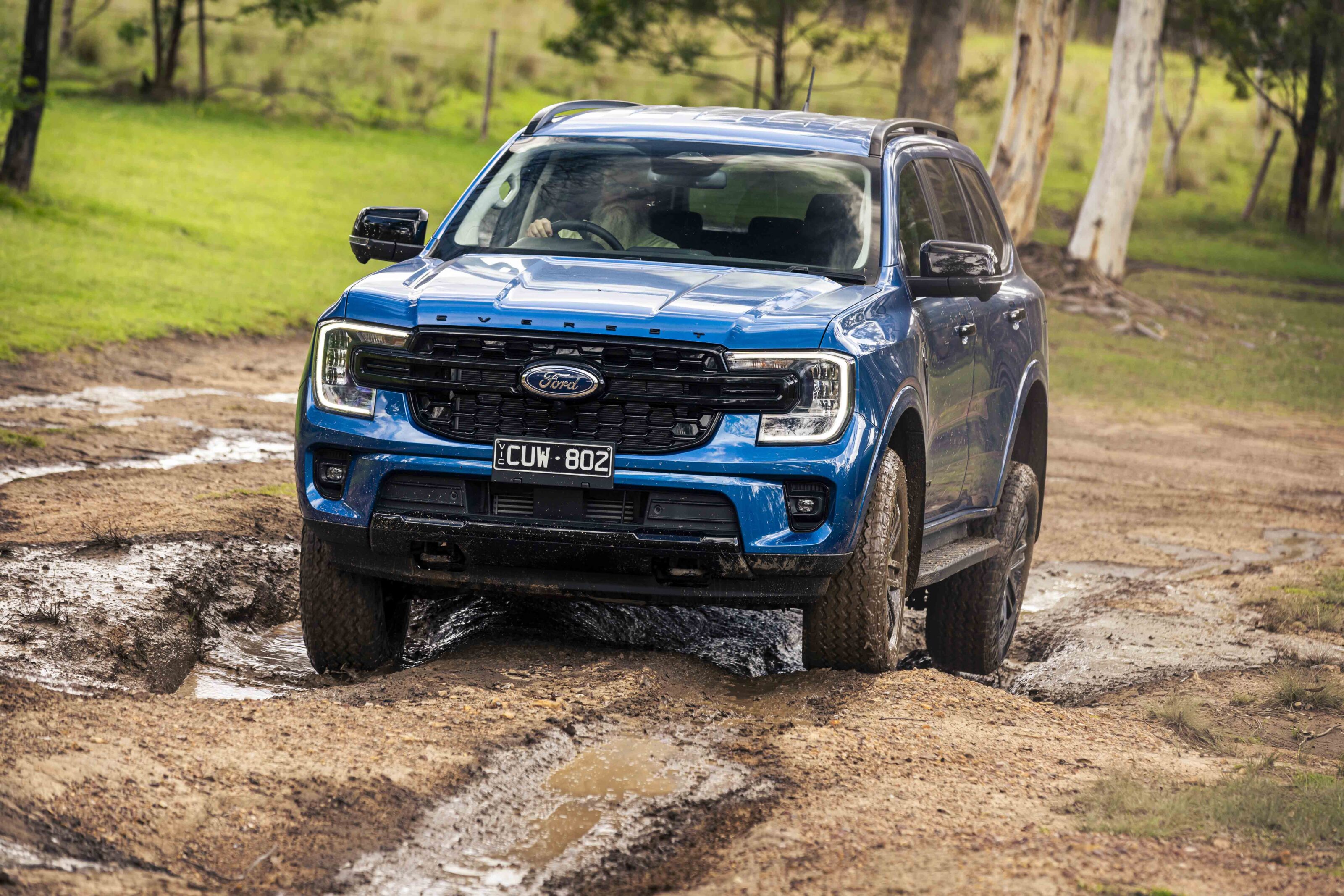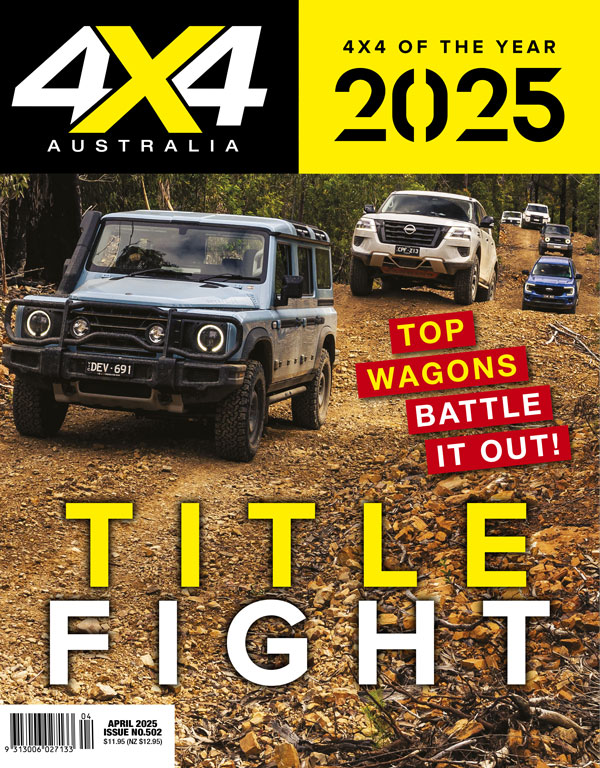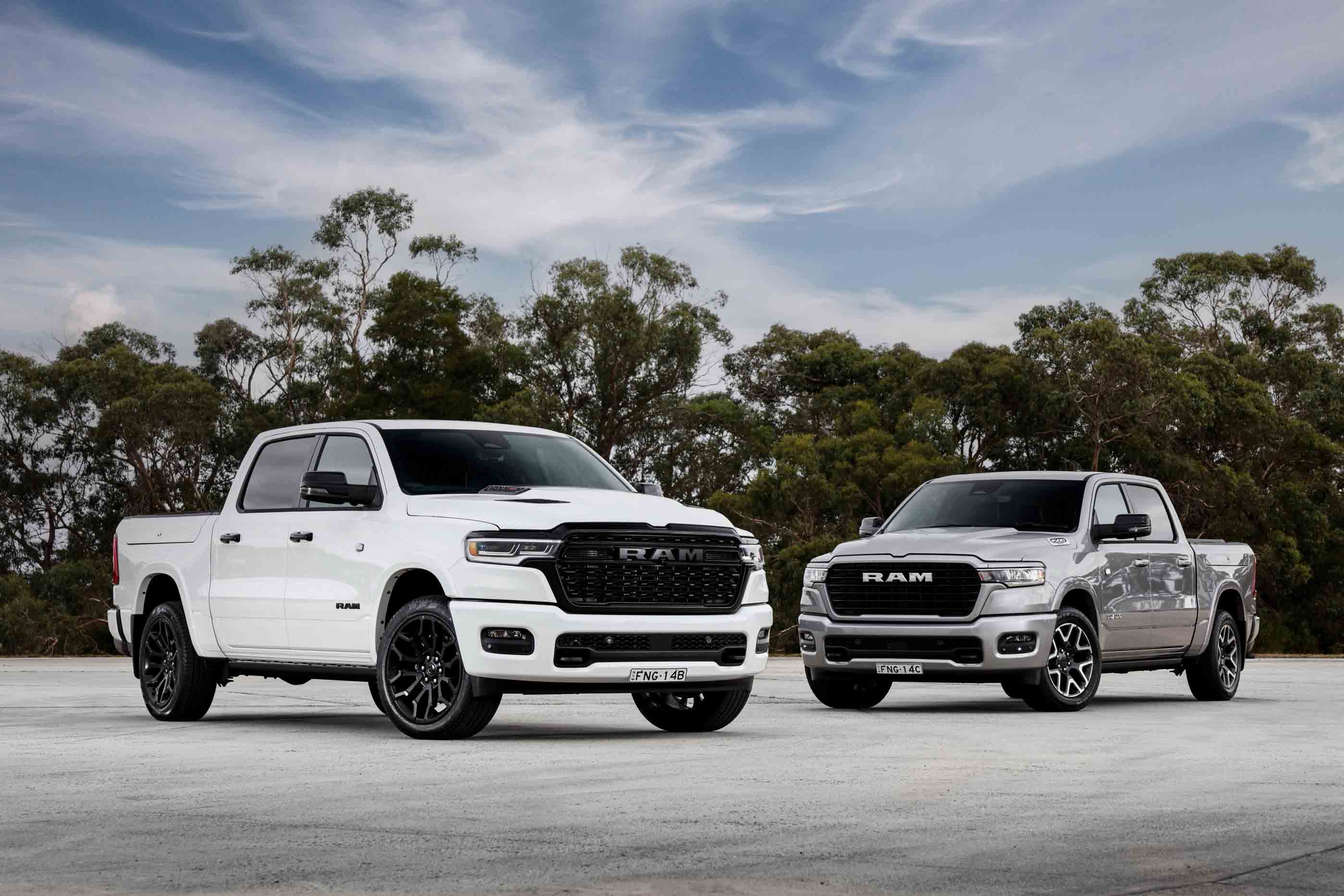Things we like
- Best engine in class, hands down
- Interior comfort and space
- Tech levels are right up there
Not so much
- Off-road ability could be better
- Price is up there
At 4X4 Australia’s 2025 4X4OTY, fellow judge Dave Morley probably summed the Ford Everest Sport V6 up best: “The Everest really is the vehicle a lot of Ranger owners should have bought”.
He’s not wrong. The Everest does pretty much everything a Ranger with a tub-topper canopy does, but in more comfort and with a nicer interior. It has the same 3500kg tow rating, it has all of the safety stuff that has always been a strong point for the Fords, and it has the same off-road ability. Plus, it has significantly more luggage space than its closest rival, the Toyota Fortuner (1823L with the rear seats folded down versus 1080L).
As you’d expect, there’s also a metric buttload more power and torque from the V6, which this segment of the market is almost always sorely lacking. In fact, the Everest is the only large diesel-powered SUV that puts respectable numbers out. Please take note, other manufacturers.
JUMP AHEAD
Exterior
Much like the next-gen Ranger, the Everest is unmistakenly an American “truck.”
The big ol’ LED headlights, the big ol’ black grille, the big ol’ wing mirrors, and the same amount of attention paid to the overall aerodynamics as was paid to a 1940’s Peterbilt. But it works. They get all the cool points, and you can’t help but start adding a front bar, winch and some high-end suspension with filthy large tyres to it in your head as you absorb its almost brutalist form.
With that said, it’s essentially unchanged from the 2024 model. There are a billion articles online already that have each switch, measurement and driver aids listed in exhaustive detail, so we won’t go too deep into them all here because we’re an off-road website. Even so, the approach, departure and rampover angles, while not exactly setting the world on fire, are not terrible at 30-, 25- and 22-degrees respectively.
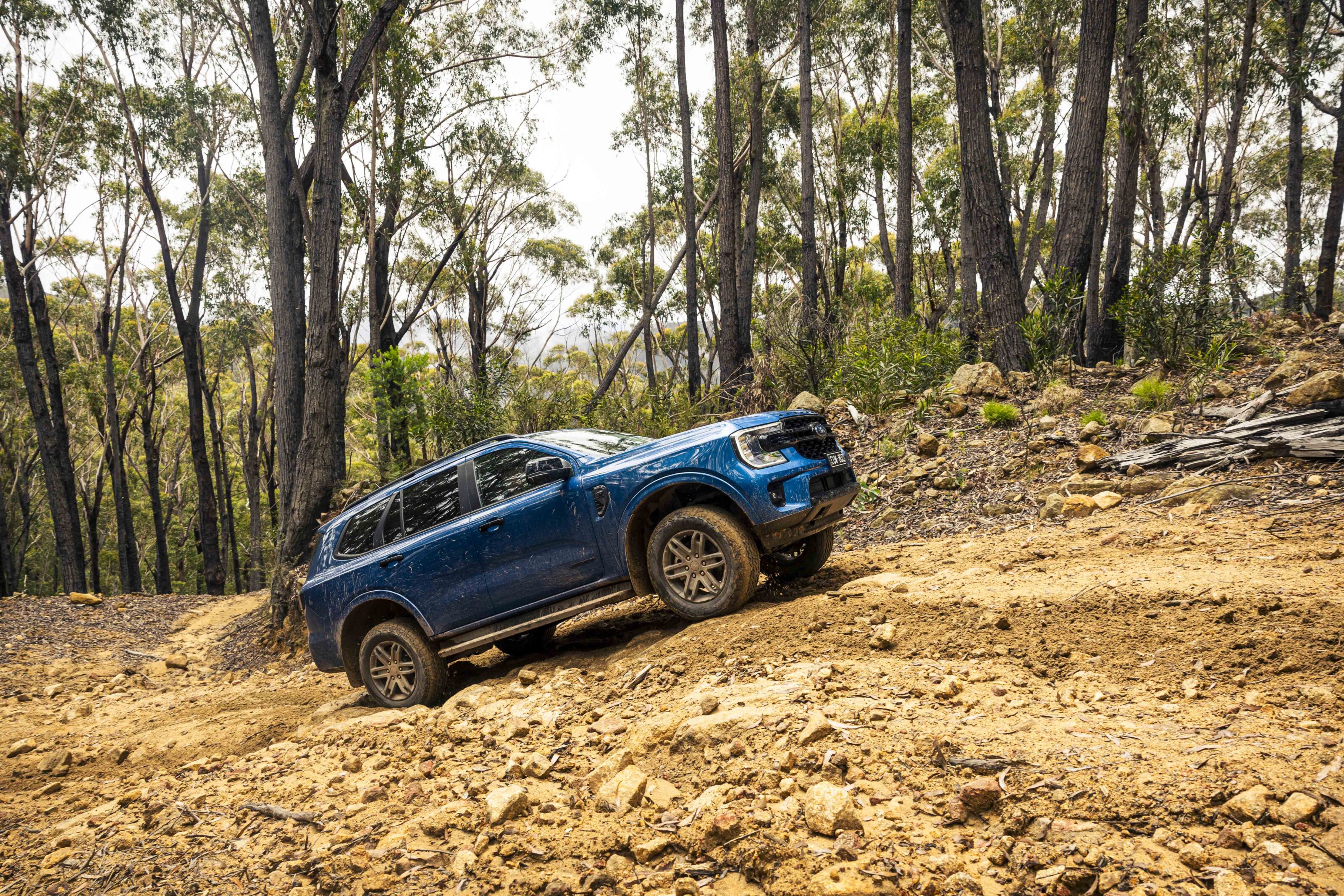
During off-road testing, the dimensions of the Ford were not problematic, and the vehicle never felt like it was one rut away from concaving a door. While we were very grateful for the standard steel bashplates, a front bar and a set of sliders would have given further peace of mind – but there are very few off-road vehicles this side of a Unimog that aren’t at least a little bit of a concern in that regard.
Sure, beauty is in the eye of the beer-holder and all that, but the Everest, for our money, is a good-looking 4×4. It’s big and ballsy without being overbearingly butch, and it only starts looking better with a few aftermarket accessories.
Interior and safety
The interior is somewhere that’s super easy to spend an hour or eight, and it makes a lot of its rivals pale by comparison.
This is seriously a nice place to spend a commute, a few hundred kays blasting up the highway … or up the Peninsula Development Road for that matter. The vertical infotainment touchscreen is huge without being obnoxious, and it’s very intuitive and easy to use.
The eight-way power leather seats are supportive and comfy, and even after several hours in the saddle didn’t leave us with aches, pains, stiffness or any other downside to being north of 25 years old. Which, if you’re coming from a 70 Series LandCruiser or a cloth-covered milk crate pov-pack ute, is a total treat.
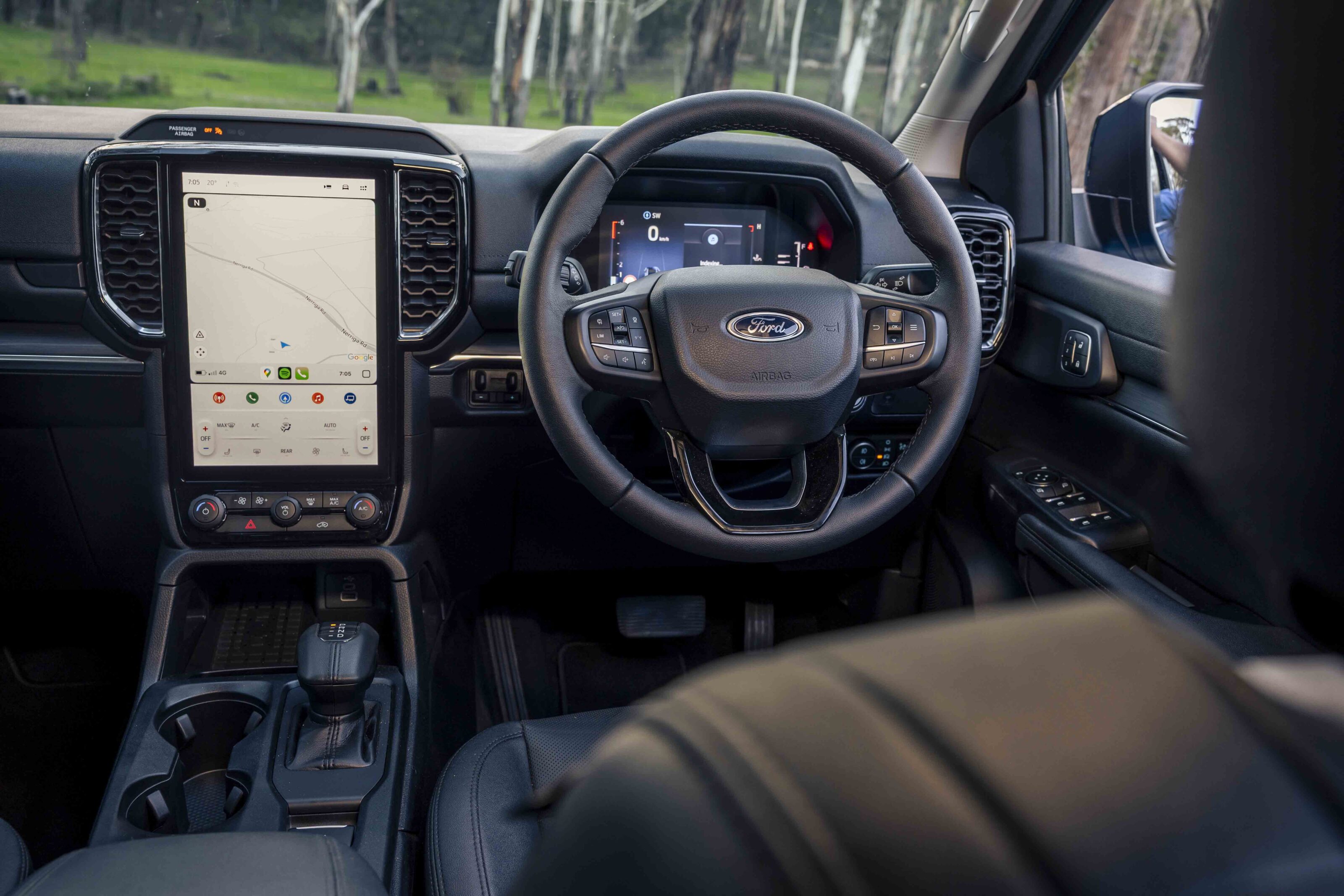
The driver aids and safety additions are plentiful. Some people will value them, others won’t (raises hand). Autonomous Emergency Braking, Lane Support System, Lane Keep Assist, and Emergency Lane Keeping (because staying between the lines needs three different computer programs to help; but whatever) are just the tip of the safety iceberg.
There’s also active cruise control with stop-and-go, auto high beam, rollover mitigation, trailer sway control, traffic sign recognition, post-impact braking and drive attention assist all as standard. Whether you like these things or not, if you’re someone who habitually rams into other cars and continues to drive after impact while wildly swerving from lane to lane and ignoring traffic signs as you struggle not to high-beam other motorists, these inclusions would be a godsend.
There are also nine airbags dotted around the cabin and a very ambience-calming 10-speaker sound system to keep the audiophiles happy. The hands-free electric tailgate will impress the neighbours, and the impressive interior build quality and high level of appointments make the Everest, particularly the higher grades, more of a Prado rival than, say, a Fortuner or MU-X rival.
On-road
Interestingly, at $74,640 the 2025 model Everest Sport V6 has increased in price by $900 over the previous year’s model, making it $7600 more expensive than the 2.0L bi-turbo Trend. Whether you think the V6 is worth the extra money is up to you, but spoiler alert: it definitely is.
It doesn’t matter if you’re buying this as the family hauler, daily driver, tow pig or touring vehicle, the V6 simply does it all easier and better than the 2.0L, which to be fair, is no slouch. But those 184 killer wasps and 600 Newton yards (hey, it’s ‘Murican) just make it a dream to drive, particularly on-road.
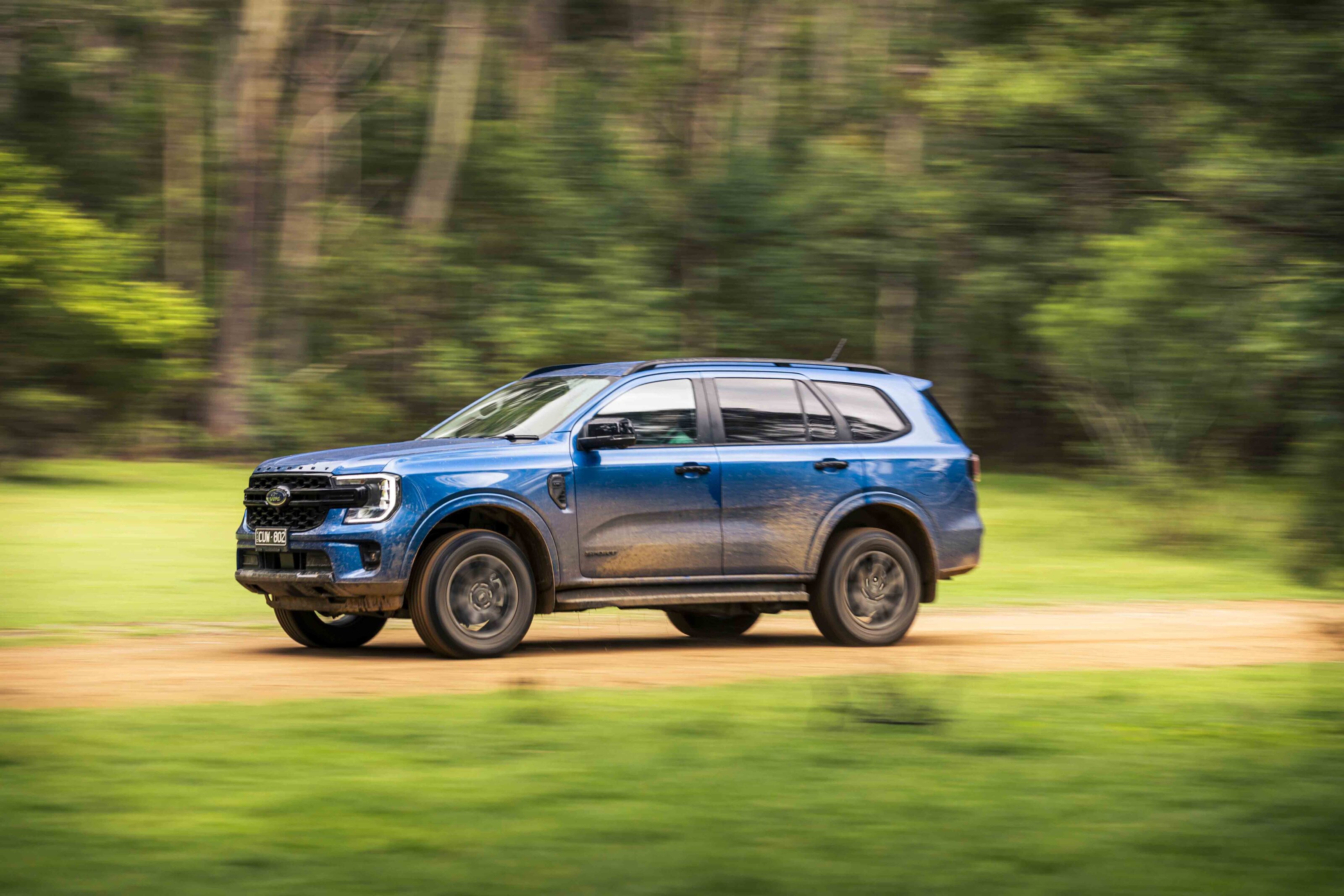
In fact, on-road is where this vehicle really shines. It doesn’t matter what kind of driving you’re buying the vehicle for, the handling for a vehicle this size is nothing short of excellent thanks to the selectable transfer case that allows you to switch between 2H and 4A when on the blacktop, and the steering is nothing short of excellent with its direct feel with decent feedback from the road without ever feeling heavy or vague.
Even if you had no intention of driving off-road and merely used this as the family holiday rig as well as for school-runs and the daily commute, the Everest is still very difficult to fault. It has power, it has comfort for days and it handles like something much sportier than it is. What’s not to like?
Off-road
At 4X4OTY, the Everest was the only vehicle on test that could select the rear locker in high-range. Everything else needed to be in low. It seems like a small thing, but for off-roaders having that little bit of extra control over the mechanicals is a lot.
However, it can’t be said that the Everest performed astoundingly out of the box. It ran out of flex, and traction control was unable to keep up without applying some serious revs, to the point where it felt like you were increasing the chance of breaking something significantly. But it’s nothing that couldn’t be fixed with a few choice aftermarket mods.
Yes, we’re an off-road website and, yes, off-road performance is incredibly important to us, but we can’t in good conscience say the Everest is a bad off-road vehicle, because it’s simply not. Is it a rock-crawler? No, but without much effort it could be a hell of a touring and tow rig, which really says a lot. It has nice, strong diffs, decently durable half-shafts that have been proven to handle up to a 35-inch tyre, factory bash plates, and not terrible off-road angles and clearance.
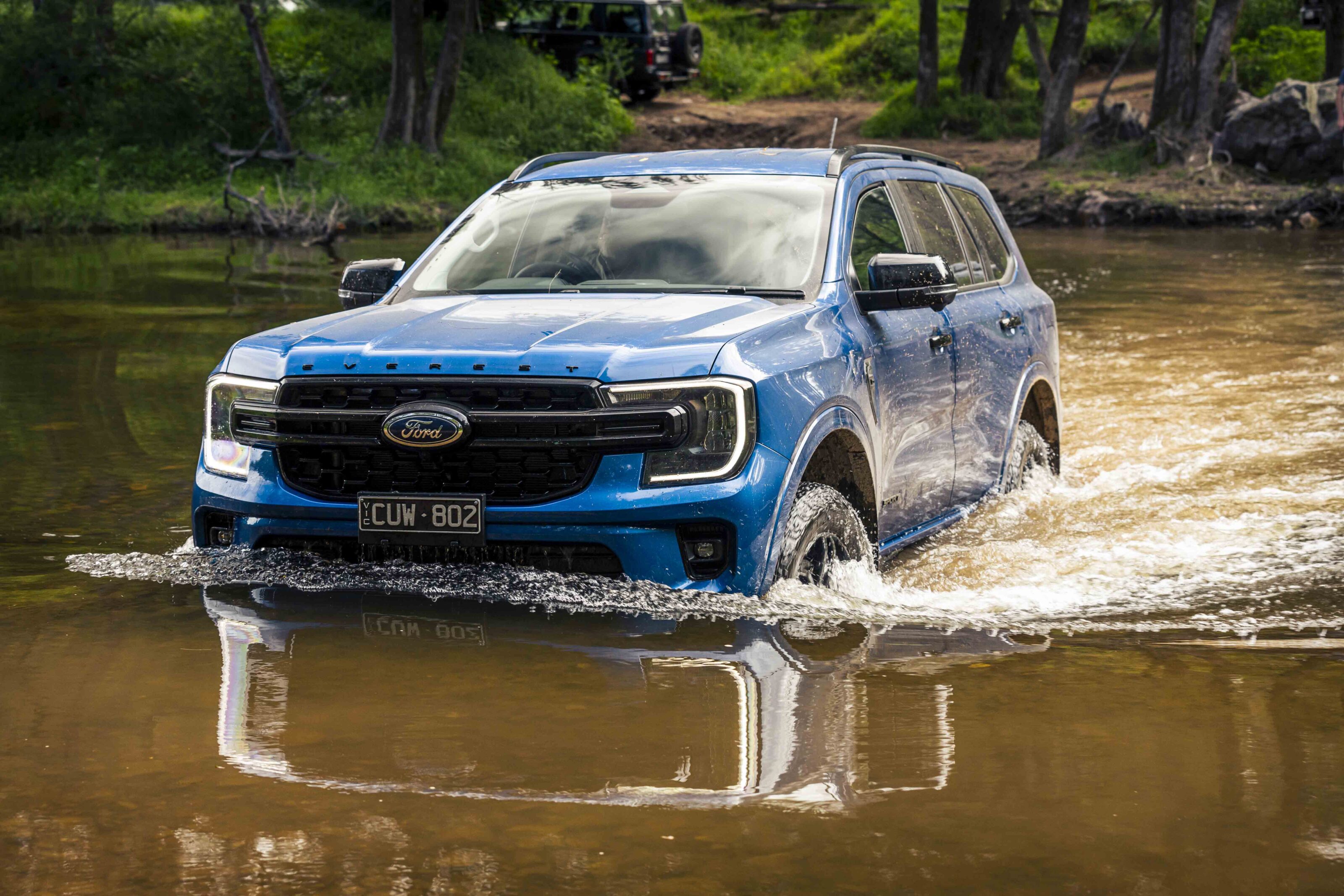
Also, you have to factor in the engine. The V6’s praises have been sung a bunch, and we stand by those lyrics – it’s a gorgeous piece of mechanical art that makes the most out of modern technology with very few drawbacks. It’s not perfect, but it’s a lot closer than any other mid-size wagon currently on the market, with the possible exception of the BMW-derived straight-six in the Ineos Grenadier; but that’s a different vehicle altogether, so it doesn’t count.
The Ford’s engine opens you up to serious towing, serious torque for wheeling, and serious power for fatigue-free long-distance driving. Yeah, it’s getting old now, having been around since the early twenty-tens, but it’s a long ways better than Toyota’s 2.8L turbo-diesel that’s about the same age, so it’s difficult to think of too many negatives.
Who should buy one?
Do you like driving off-road or for long distances? Do you need more than two usable seats? Is having a tray a non-negotiable vehicle requirement for you? If you answered yes, yes and no respectively, then you need to be looking at an Everest. Simple as that.
It may not be perfect for you and there may be things you won’t like about it, but it does need to be a consideration. The big Ford just does too many things right for it not to be.
Things we like
- Best engine in class, hands down
- Interior comfort and space
- Tech levels are right up there
Not so much
- Off-road ability could be better
- Price is up there
We recommend
-
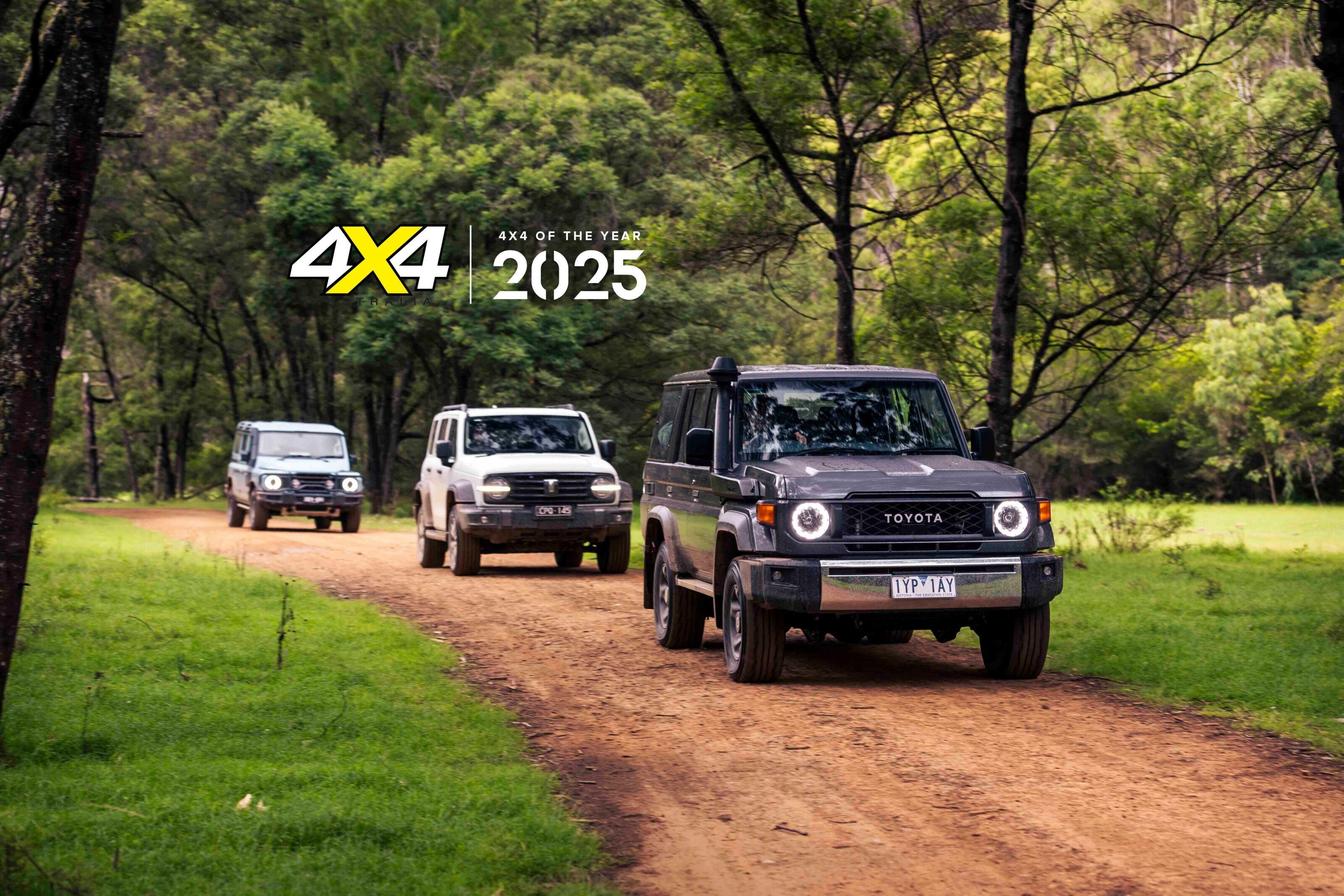 4x4OTY
4x4OTY2025 4x4 of the Year: Winners revealed
Six contenders clash for the coveted 4X4OTY gong!
-
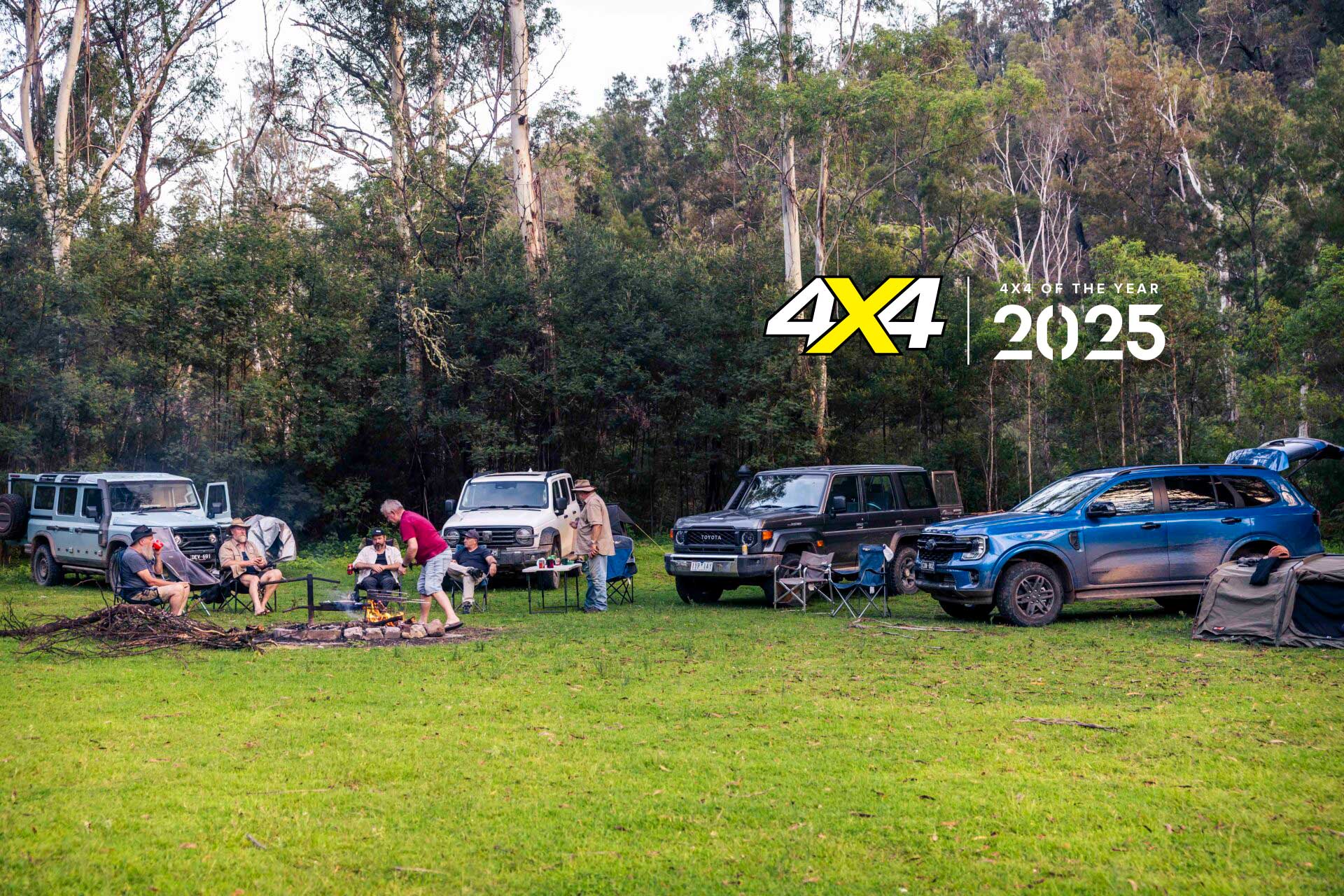 4x4OTY
4x4OTY2025 4x4 of the Year: Where the testing took place
A week of rigorous off-road testing divides the best from the rest
-
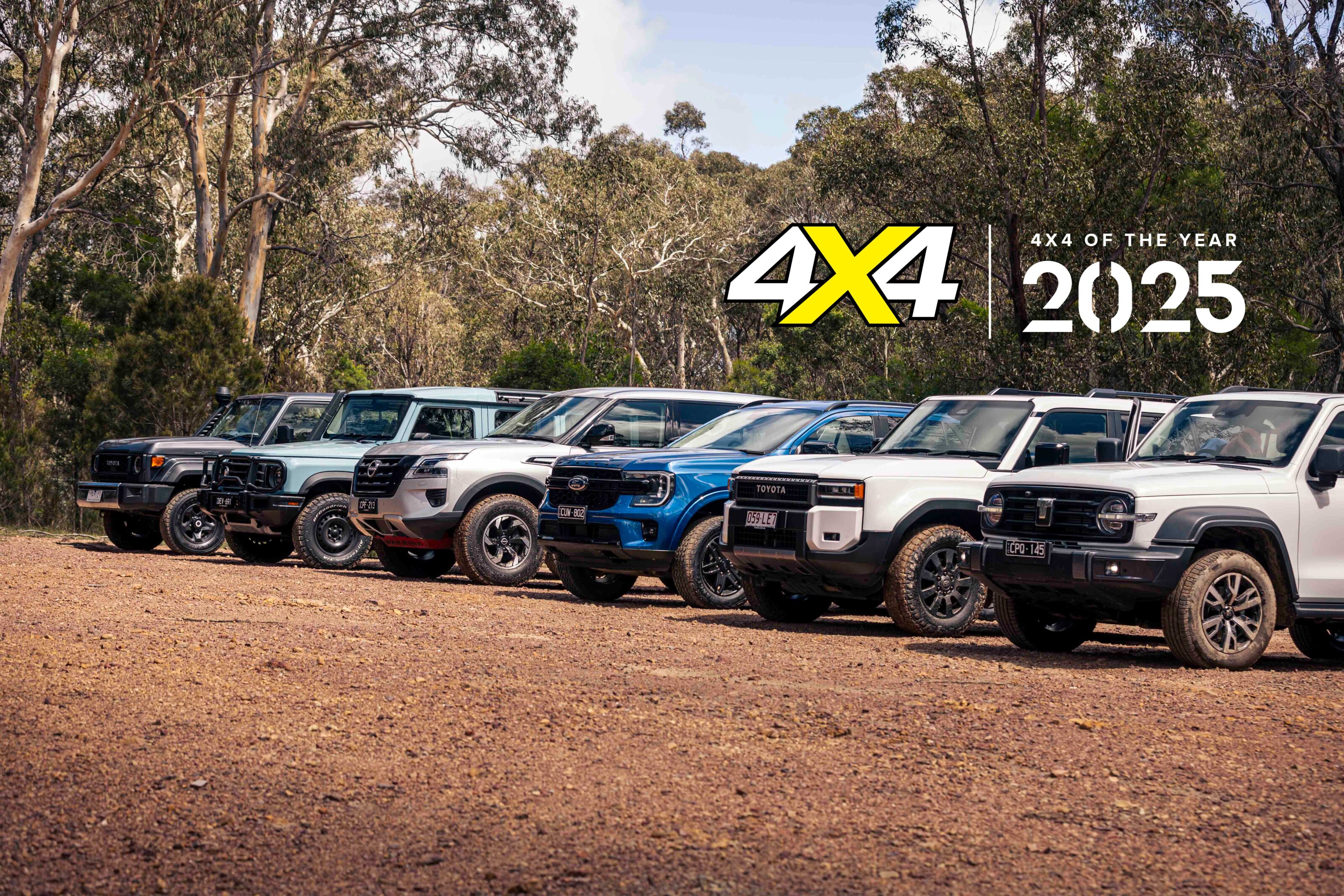 4x4OTY
4x4OTY2025 4x4 of the Year: How each contender fared
Here’s how each of the six contenders performed during the testing process


